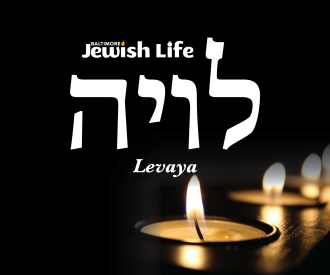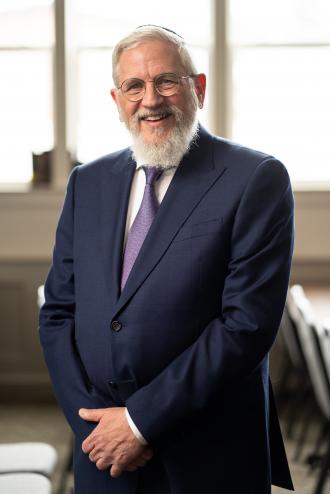1) Pesach Application
Welcome to the Vilna Gaon on parshas Bo, and as I always say this time of year: In these parshios there’s beautiful divrei Torah that inspire our emunah and bitachon, but also they are inspiring ideas for Pesach because these ideas are all about Yitziyas Mitzrayim and the themes of Egypt and beautiful lessons that could be said over at the Shabbos table for parsha Bo, or the truth is that many of them apply for many of the weeks of Shemos, and the ones that inspire you can be saved for Passach as well.
2) To Remove Avraham’s Complaint
Moshe was told by Hashem to command the nation that “vayishalu ish mei’eis rei’eihu”. Each person should borrow from the Egyptians. “v’isha mei’eis ri’usa”, and the Jewish women should borrow from the female Egyptians, “kli kesef u’klei zahav” (Shemos 11:2). Rashi brings down the gemara in Berachos (9a) that this was very important to Hashem, said as“dabeir nah”, with a beseechment. Please make sure the Jews take gifts. “Bevakash mimcha.” I beg of you. Please, tell the Jews that they need to ask for things, kli kesef and kli zahav, so that Avraham, “She’lo yomar oso tzaddik”, that Avraham shouldn’t say: Oh, Hashem, look: you had the Jews in Egypt and you fulfilled “va’avdam v’inu osam”, that you fulfilled, but you promised that my children will be “yotzei b’reshus gadol”, that you did not fulfill. The Jews said back: Listen, halivy, we’ll just go out. We don’t care about that bakasha; let’s just leave because a person that’s trapped in a jail just wants to get out. Doesn’t matter that he’s going to get all this money. But, Hashem said: Please, it’s an important thing to me.
What Was Avraham’s Complaint?
Vilna Gaon asks, and this is part of a longer d’var Torah if you want to look it up, it has some very interesting points, but I’m going to focus on one aspect. If the whole idea here is that Avraham shouldn’t complain to Hashem that: Hey, look, you subjugated them, but you didn’t give them ‘lots of wealth’, then if Hashem didn’t keep his word, why do I need Avraham to come complain. G-d has to keep His word no matter what?! “Chosamo shel Hakadosh Baruch Hu emes.” G-d is truth. So, obviously, G-d did keep His word. So, what does it mean that specifically: I don’t want Avraham to complain.
Sneak Exodus?
Gra has a very beautiful p’shat here which is worth thinking about. He opens with another question: If you think about the entire exodus, there’s a seemingly sneaky theme going on. We find this idea throughout Chazal. The Jews were commanded by Hashem to ask for a three day break where they probably were just going to escape then, and, in fact, even when Pharaoh finally agreed to let them go, there was an implication that it was only for three days, and that’s why Pharoah actually chased after them, and met them on the seventh day at the yam. Not only that, the Jews borrowed the klei kesef and klei zahav, but they had no intention of ever giving them back. So, again, it seems very sneaky.
Gra also brings down that there’s a Midrash in Shir Hashirim which says that the pasuk tells us, “kafu t’homos b’leiv yam” Hashem dried out, G-d congealed or cleaned out the bottom of the sea. Meaning, He made it walkable, and then the words of the pasuk say, “Amar oiyev, erdof, asig, achaleik shalal”. What does that mean? The enemy said that we will pursue them. The Midrash explains that when Pharaoh was about to go into the sea, he saw that it was closing in on him, he saw that it was wet, and he realized that he was going to die, but Hashem specifically made a dry patch for him, so that he would think: It’s going to split for me too. It’s going to be dry for me too, and then he ran in, and everyone followed him, and that’s when Egypt was destroyed. Was this just a game?
Repayment
Says the Vilna Gaon: When we think about the entire subjugation and the entire derech of the yetzeir, the whole thing was done through trickery. A new king got up, “asheir lo yadah es Yosef”. He forgot about Yosef, conveniently, he hired the Jews, the gemara in Sotah says that it was peh rach, it was a soft mouth that said: Just do a little bit of work, and we’ll pay you, and you got to be patriotic. The Jews were fooled into the subjugation. It represents the yetzer harah, Pharoah and his nation, who fooled them, and said that we want you to just help out and be patriotic.
Pharaoh tried to get the miyaldos to murder the Jewish babies and to pretend that the Jewish males had died during labor. He tried to train them, like the gemara says, to kill them on the birth stool, and then to pretend: I’m sorry, your baby died.” They didn’t listen to them, and they were blessed with sons whose Torah lit up the world and descendents whose Torah lit up the world and daughter Miriam who she herself was a great prophetess and a great woman in the Jewish nation and her descendents were also cohanim, neviim, etc. like Rashi brings down in the beginning of Shemos. The Egyptians played dirty and should not have been surprised when they were punished accordingly!
There’s another Midrash the Gra brings down that says that Pharaoh told the Egyptians if you kill the Jewish boys don’t worry, I’ll defend you. The Jewish people will bring you to court, and I’ll preside over the case, and I’ll say to them: Bring witnesses. And, of course, they’ll never be able to do that because they were in a frenzy watching their child, rachmana l’tzlan get murdered, and then you’ll get away with it.
Middah K’neged Middah
Says the Gra, this is a middah k’neged middah. Hashem specifically wanted to make it look like that the punishment that came on the Egyptian should also be cunning in order to show them middah k’neged middah because of your cunning behaviors, that’s why you’re being punished this way. Part of the cunning approach was that the Jewish people would take out, would borrow, and it wouldn’t look like they were getting anything from the Egyptians. It would look like they would have to return it later. Really, the “v’avdah v’inu osam”, they’re going to be punished and subjugated, that, of course, they were mekayeim in Mitzrayim, but the “v’achar kein yeitzu b’rechush gadol” refered to when the jewish people went out at the Yam Suf, and they died, all the Egyptians wealth that they brought, the Jewish people, what they were saying to Hashem was: We don’t have to carry all this stuff. We’ll just get it later. We know what you have in store. We don’t have to carry it. We’ll just get it when they chase after us later. But, says the Gra: Then it would have messed the ruse, it would have messed up the cunning trick, because then the Egyptians would have realized: They are not coming back! Hashem wanted the to be part of this trick that it would look like they were leaving, and planning on coming back. They were borrowing things.
Hashem Would Have Waited
Says the Gra, it was only because Avraham didn’t want to see his descendants get hurt, and be in any pain without leaving with immediate wealth. As soon as they left Avraham wanted to see that they go rewarded because a father loves his child, and he takes care of them. And, really, the Rebono Shel Olam said: I love them more, don’t worry. I have so much more in store for them, but it was only Avraham’s tayna that could have pushed through their taking now. Hashem said: Avraham is going to hold me to it, and I’m “chosamo shel Hakadosh Baruch Hu emes”. So, therefore, I want to make sure that the literal translation of the word that they will go out with wealth; the second they exit they’ll have wealth.
It’s true that in the end my word will be fully mekayeim, and Chazal say that the bizas hayam, the booty that the Jewish people got at the Yam Suf was larger than anything they even carried out of Egypt, and, of course, there was a rechush gadol. But, nonetheless, even for a moment, we didn’t want Avraham to say to Hashem: Hey, look they’re leaving Egypt, and they don’t have anything. We see the care and the affection that a father has for his son, but, ultimately, the Rebono Shel Olam’s care and affection for us is even greater because He also didn’t want us to have to carry everything. And, therefore, He had the Egyptians come and the Jewish people got the ultimate redemption where they got to see their oppressors dead and punished and knowing that they’re fully safe from them, and they could never come after them again. “Vayar Yisrael es Mitzrayim meis al sifas hayam.” This is a fascinating look at that story, and how the Rebono Shel Olam punishes middah k’neged middah.
3) Borrow Levels and Then Earn
One of the things that should be brought out is based on the Seforno as well which is that the entire madreigah of Pesach is that first we have to, and leading up to Shavuos and kaballas HaTorah is this idea of “vayish’ileim, they borrowed.” This is a lesson for us. Borrow the madreigah that you’re not even at, but then you’ll earn it during the time period. So, just like the Jews, it began with a borrowing and ended with rightful ownership, as the Jews earned it when the Egyptians attacked them and lost at sea. When the Egyptians chased after them and lost the war, the Jewish people owned it and became theirs, legally. They had no responsibility to return it.
A famous Midrash says that the Egyptians came back in the time of Alexander the Great and brought the Jews to court which we’ve talked about in the past, and tried to take the money back, and the one Jewish layman got up and said: No, problem, we’ll pay you back for all the things that we took as soon as you pay us back for the two-hundred and ten years of servitude that you subjugated our entire nation to, and when they started calculating that, the Egyptian realized that it was better for the Jews to just keep what they had, and just call it even because they were going to owe billions more. So, again this represents that the spiritual aspect, gift of the time, that a person could be techilaso she’eilah. First, just borrow; you’re not really at that level. But, at the end, you could earn it, and it will become yours, and that’s what we’re trying to work on in life. We always try to grab onto something. Kadeish, we grab onto holiness, and then u’rechatz, then we earn it because we grab onto this something that will pull us forward and will inspire us to be greater and greater people.
4) Moon Appearance
“Hachodesh hazeh lachem, rosh chadashim (12:2).” We know the gemara tells us, Rashi brings this down also Moshe was not understanding molad halevana. He was not understanding very complex calculations of the moon, and, so, Hashem showed him exactly what the moon should look like when you’re mekasdeish it, and that’s why it says “hachodesh hazeh lachem” that Hashem was pointing. Whenever it says “zeh” it means Hashem is pointing.
Three Difficulties
Gra brings down that there are three things that Moshe had difficulty with, and this is a little bit difficult because there is a gemara in Menachos that has different girsaos, which we will quote and explain. Menachos 29a says there are three things that Moshe had trouble with and it’s a machlokes what these three things are, so let me just go through all of them. So, one of them is for sure the menorah. Another is for sure hachodesh, the month, which is this one, which he didn’t know how the menorah was being created, the miksheh, and Hashem showed him. Moshe didn’t know hachodesh, how the moon was supposed to look, and Hashem showed him. nd, then the other, the third one is either shekalim, that Moshe didn’t understand shekalim, or sheratzim. He didn’t understand the shemoneh sheratzim. And, if you look at the gemara in Menachos there it says: Three things were kasha to Moshe, and it’s menorah, rosh chodesh and sheratzim. And, Tosfos asks: What about ma’aseh shekel because it says, “Zeh yitnu”. That one should be counted as well. The Midrash say: Hashem showed Moshe a matbei’ah shel eish. So, Tosfos tries to give his answer there. We’re not going to go into that.
Moshe’s Name Hints
Says the Gra that the name Moshe is actually roshei teivos menorah, shekalim or sheratzim and hachodesh. That’s Moshe’s name. And, not only that, it’s also sofei teivos. The last letters of menorah, shekalim or sheratzim, and hachodesh also spell Moshe. And, that’s the remez to his name in these three things he was miskasheh by.
Willing to Learn
Now, the question is what does that mean? What I believe is that we call Moshe Rabbeinu, our leader, our teacher. But, Moshe was anav m’kol adam, and these three things that embody his name, they show from beginning ‘till end, roshei teivos and sofei teivos, that Moshe was willing to say: I don’t know when he didn’t know, and then he could say to the Rebono Shel Olam: I don’t understand the menorah. I don’t understand the shekallim, or I don’t understand the sheratzim. I don’t understand hachodesh. And, Hashem would teach it to him. And, we should never be afraid to say: I don’t understand because that is the way we are going to learn. And, we think we know it all, and then we know nothing. But, the anav is always running towards Hashem and saying: Please, teach it to me. And, that subservience that he has towards Hashem is part of the Moshe kibeil Torah m’Sinai, masrah l’Yehoshua and Sinai teaches us to be humble. That’s why it was chosen. And, that humility is the epitome of Moshe. These three things are how Moshe turned to Hashem and said: Rebono Shel Olam, guide me. That’s where Torah is embodied in that name of Moshe. Those three items.
5) Tefillin Details
There’s a big machlokes between the Sefardim, Ashkenazim, Mekubalim, Lubavitch whether to wear Rabbeinu Tam tefillin or not. The gemara is in Menachos 7b, ayein sham Rashi, Tosfos, very interesting ideas. There’s also a Rayvid, and many other. So, Rav Chaim Volozhin was a talmid muvhak of the Gra, and he asked him one time: Why don’t you put on teffillin of Rabbeinu Tam? Why do you only put on tefillin of Rashi. Gra answered him that if I was going to put on Rabbeinu Tam I would need to put on sixty-four different pairs of teffillin because there are many, many shittas about how to do each one, and what order, and in those shittas, there are shittas of shittas. And, if you want you could look on Peninim MeiShluchan HaGra, page 130. It actually explains the sixty-four ways.
Baal Tosif
Rav Chaim Volozhin told over that his rebbe, the Vilna Gaon, one time said to him, “You should know, my dear talmid, Rav Chaim that I have many, many kashas on Rabbeinu Ram’s opinion, and when I go into the Olam HaEmes,” he told him, “it’s going to take me three days to say over all of my kashas, but what I understand is that, of course, Rabbeinu Tam, is a baki in kol HaTorah kula, and there’s certainly what to talk about it. However, I believe that because of bal tosif, I will not put on tefillin d’Rabbeinu Tam.” And, that’s the shitah of the Vilna Gaon, and, of course the Levush, and the Ma’adanei Hamelech and the Mizrachi and many other people bring this shitah in the last perek of Eiruvin that there’s ba’al tosif, etc. and the Rav Chaim Volozhin said that from that time on, he himself stopped putting on tefillin d’Rabbeinu Tam. He was convinced by his rebbe not to do it.
Follow Custom
Of course, everyone should follow their own minhag. My Rebbe Rav Efraim Greenblatt once told me, and this is printed by many other people that it’s k’dye to put on tefillin d’Rabbeinu Tam once in one’s lifetime, just so that they shouldn’t be “karkafta d’lo manach tefillin”. At least one time you put on, according to shittas Rabbeinu Tam. But, of course, this is not something that a person has to do. It’s a chumra. There are different opinions.
What Future Will Bring
There’s a beautiful, brilliant piece by Aruch HaShulchan. He brings down from the mekubalim, from the Zohar and from the Arizal that l’asid la’vo we will have tefillin of Rabbeinu Tam. This is also brought down in Shaylos u’Teshuvos min Hashmayim where this rishon put a paper under his bed and he asked whatever it was, the maggid that was talking, whatever it is, which tefillin are correct, and he was told tefillin d’Rabbeinu Tam. What does this mean? So, of course, “lo bashamayim he,” and there’s a whole discussion. We’re not going to get into that.
Future Hint
Aruch HaShulchan explains in Hilchos tefillin that the two havayos are next to each other in tefillin d’Rabbeinu Tam, whereas according to Rashi, the two v’hayas are not next to each other. They’re interrupted. What does that mean? That means that in Olam Hazeh Hashem’s name is not shaleim, and in l’asid lavo, the two havayahs of Hahsem, yud-heih and yud-heih will be put next to each other. The sheim will be transformed into Yud-heih and Yud-heih where like I am written that’s how I am said. Ekeh asher ekeh. The sod of Ekyeh asher ekyeh which I don’t fully understand what these things mean, but what I do understand is that what he’s saying is that in Olam Hazeh the halacha is like Rashi because the Sheim of Hashem and the Kiseih of Hashem is not shleim, but L’asid Lavoh the halacha will be like Rabbeinu Tam, and it’s just a fascinating way of looking at this. Ayein sham in the Aruch HaShulchan in Hilchos tefillin where he tries to explain this.
---
Rabbi Yosef Tropper is a rabbi and psychotherapist. Subscribe at ParshaThemes.com















